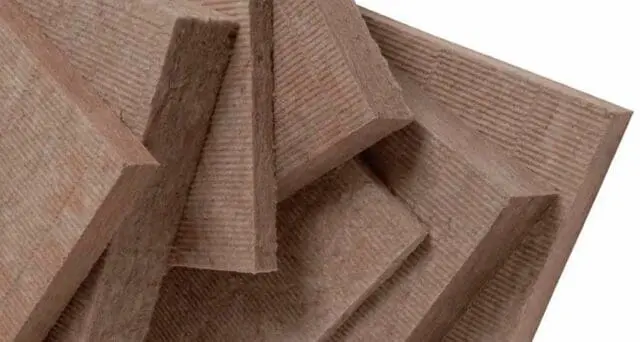Acoustic Sound Insulation Guide

Acoustic insulation: A guide to what is the best soundproofing insulation
Acoustic insulation and soundproofing are often referred to as the same thing. Acoustic or sound insulation is the term most closely associated with soundproofing. When you soundproof a wall, floor or ceiling, acoustic insulation is one of the key soundproofing principles; however, acoustic insulation also refers to certain soundproofing products that provide acoustic insulation when fitted in a room. This noise insulation guide will show you how acoustic insulation is not only a soundproofing term but also a material that will enhance the noise reducing performance of a building.
Are soundproofing and acoustic insulation the same thing?
Soundproofing refers to reducing noise transfer between rooms. Acoustic insulation is used in all of the best soundproofing solutions for walls, floors, and ceilings; yes, we can consider soundproofing and acoustic insulation to be the same. When you soundproof a wall against a noisy neighbour, your solution would include sound insulation, typically in the form of an soundproof insulation slab, which is probably the most common type of sound insulation. As you go through our guide, we will show you a variety of sound insulation materials, including acoustic underlays, soundproof panels and complete soundproof systems that all use acoustic insulation.
Sound insulation in soundproofing
Soundproofing involves increasing mass/density and sound absorption. The acoustic insulation slabs inside the stud frame or between floor joists stop sound from resonating inside the cavity and acting as a drum. DFM acoustic insulation slabs provide mass/density and sound absorption that reduces the sound reverberating inside the wall or floor void
Acoustic insulation adds mass and sound absorption
- Mass/Density: Increasing the mass of an area makes it more difficult for sound to transfer between rooms. Airborne sounds are reduced when they pass through a high-density structure. Applying materials of differing mass further improves the acoustic perfomance as different mass levels block different sound frequencies.
- Sound absorption: Sound insulation also helps the room absorb sounds. Soundproof insulation slabs and soundproof membranes, such as mass-loaded vinyl, are great sources of sound absorption, blocking and absorbing sound energy as it passes through the building’s structure.
Why choose acoustic insulation?
Acoustics, soundproofing, and noise insulation are essential for reducing sound transmission between spaces. They create a barrier that absorbs and blocks noise, minimising sound transfer.
Key benefits of acoustic insulation
- Noise Reduction: Effectively reduces sound transmission through a building structure.
- Versatile Applications: Suitable for sound insulating walls, ceilings, and floors.
- Variety of Products: Available in different densities, sizes, and thicknesses to meet requirements.
- High Performance: Offers both soundproofing and thermal insulation properties.
- Easy Installation: User-friendly DIY installation.
- Low Maintenance: Durable and reliable with minimal upkeep required.
- Eco-Friendly: Many products are manufactured using recycled materials.
What is the best sound insulation for soundproofing a room?
Firstly, we will look at high density acoustic slab insulation, the most prominent form of soundproofing insulation.
Acoustic or sound insulation slabs are a form of insulation with a greater density rating than thermal insulation, making the slab version better for sound insulation than low-density thermal insulation. The good news is that when you insulate your room with sound insulation slabs, you will also benefit from thermal insulation, as sound insulation slabs have thermal insulation properties.
How to choose the best acoustic insulation for your soundproofing
What is the best density of acoustic slab to choose?
As we mentioned in the article, mass is the most important factor to consider when soundproofing, so you will need to know which slabs to choose, as they are manufactured in various densities.
The lowest-density insulation slabs weigh 45kg/m3, and the highest 140kg/m3. We supply all the available densities.
60kg/m3 sound insulation slabs offer optimum acoustic insulation performance
For optimum perfomance, we recommend using the 60kg/m3 sound insulation slabs, as these are proven to offer the best levels of noise reduction when comparing cost against performance. Higher density slabs cost more, but the return on the soundproofing perfomance doesn’t warrant the extra spend, and this is why we use the 60kg/m3 acoustic slabs in all our soundproof systems.
What thickness of insulation is best?
The correct insulation thickness will depend on the depth of the cavity that needs to be insulated. Noise insulation slabs are supplied in 25mm, 50mm, 75mm and 100mm thick slabs.
When choosing the insulation thickness, it is important to note that the cavity you are insulating does not need filling; filling the void could cause a potential bridge for sound to transfer.
We recommend filling the cavity between 50% and 75% of its depth for the best soundproofing. If you are soundproofing a stud wall and the frame is four inches deep, the best thickness to choose would be 75mm. The recommended depth of insulation to use between floor joists is 100mm.
Choose DFM noise insulation slabs for your soundproofing solution
What are the best performing acoustic insulation solutions
Acoustic insulation does not relate solely to sound insulation slabs. It also refers to all aspects of soundproofing a room and incorporating sound insulation products into a complete soundproof solution for a wall, floor or ceiling.
Using various sound insulation products will ultimately provide the highest noise reduction levels. Below are some examples of solutions that use acoustic insulation slabs as part of a wider soundproofing solution that combines acoustic soundproof boarding and sound isolation clips to enhance the noise reduction of the areas to which they are applied.
Acoustic insulation solutions that have the highest level of sound insulation
The AcoustiClip Direct System is the highest performing direct to wall acoustic insulation system. The system will significantly improve the acoustic perfomance of party walls to soundproof against noisy neighbours and other noise nuisances.
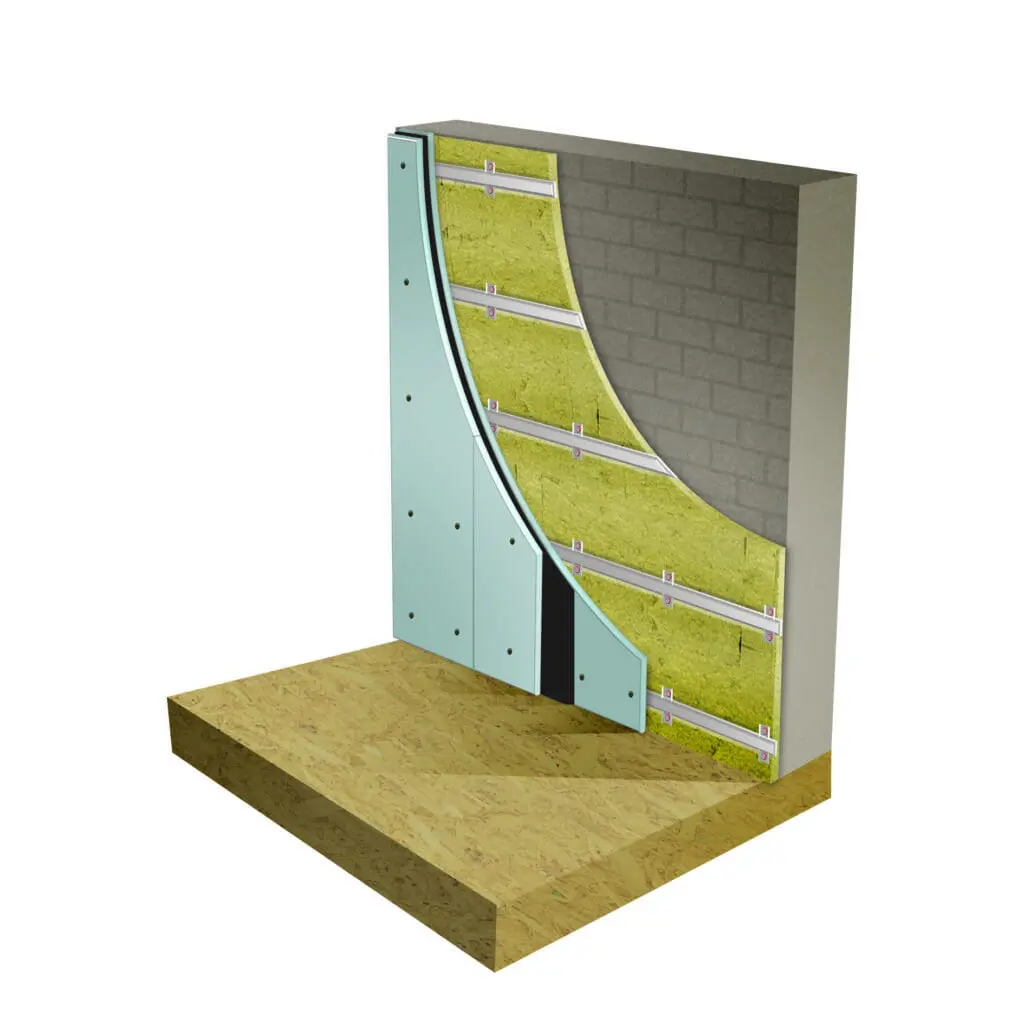
AcoustiClip Direct Party Wall System
The AcoustiClip system will reduce airborne sounds and vibration noises that travel through the wall. The system incorporates acoustic soundproof insulation slabs to sound insulate the cavity created using the AcoustiClip sound isolation clip and AcoustiChannel metal furring stud. The sound slabs reduce sounds inside the cavity between the existing and new acoustic walls, preventing sound from resonating inside the void.
Soundproof panels increase the sound insulation of walls
Direct to wall soundproofing panels sound insulation for walls without compromising space
The best soundproofing insulation panels will provide mass and sound absorption to walls. The Noisestop Silent Panel is the best board for sound insulating studs and party walls that require soundproofing without compromising living space; at only 30mm thick is a good choice for soundproofing walls and retaining valuable living space.
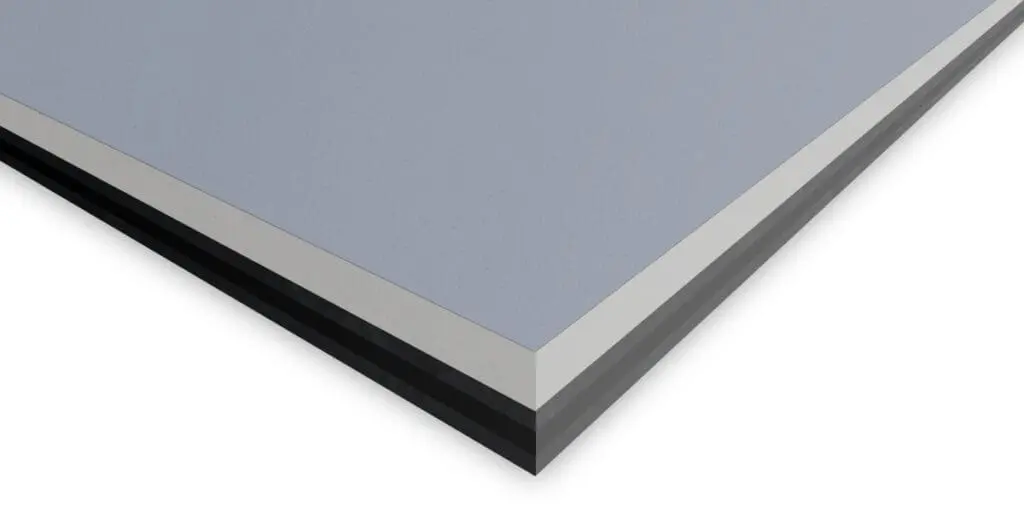
Noisestop Silent Panel acoustic board
Adds mass density and sound absorption to walls. The panels consist of four layers of soundproofing laminated to form one acoustic board, which is applied directly to the wall.
- 15mm acoustic grade plasterboard (higher density than standard plasterboard)
- 3mm Mass Loaded Vinyl (the additional mass layer that absorbs and blocks sound)
- 9mm Closed Cell Foam (dampens sound energy and vibrations)
- 3mm Mass Loaded Vinyl (a further layer of mass)
Acoustic insulation solutions for ceilings
Improving the sound reduction of ceilings requires sound insulation to increase the ceiling’s mass, density, and sound absorption ability. Ceilings with timber joists have far less mass and density than concrete ceilings and would typically require more acoustic insulation to improve noise reduction.
- Sound insulation between floor/ceiling joists adds density, mass, and sound absorption.
- Increase the ability of the ceiling to block and absorb sounds and vibrations through the structure.
- Product combinations, including soundproof insulation, sound isolation clips, and soundproof panels, will provide the highest level of acoustic insulation.
For the best acoustic insulation for ceilings, use the AcoustiClip Timber Joist Ceiling System
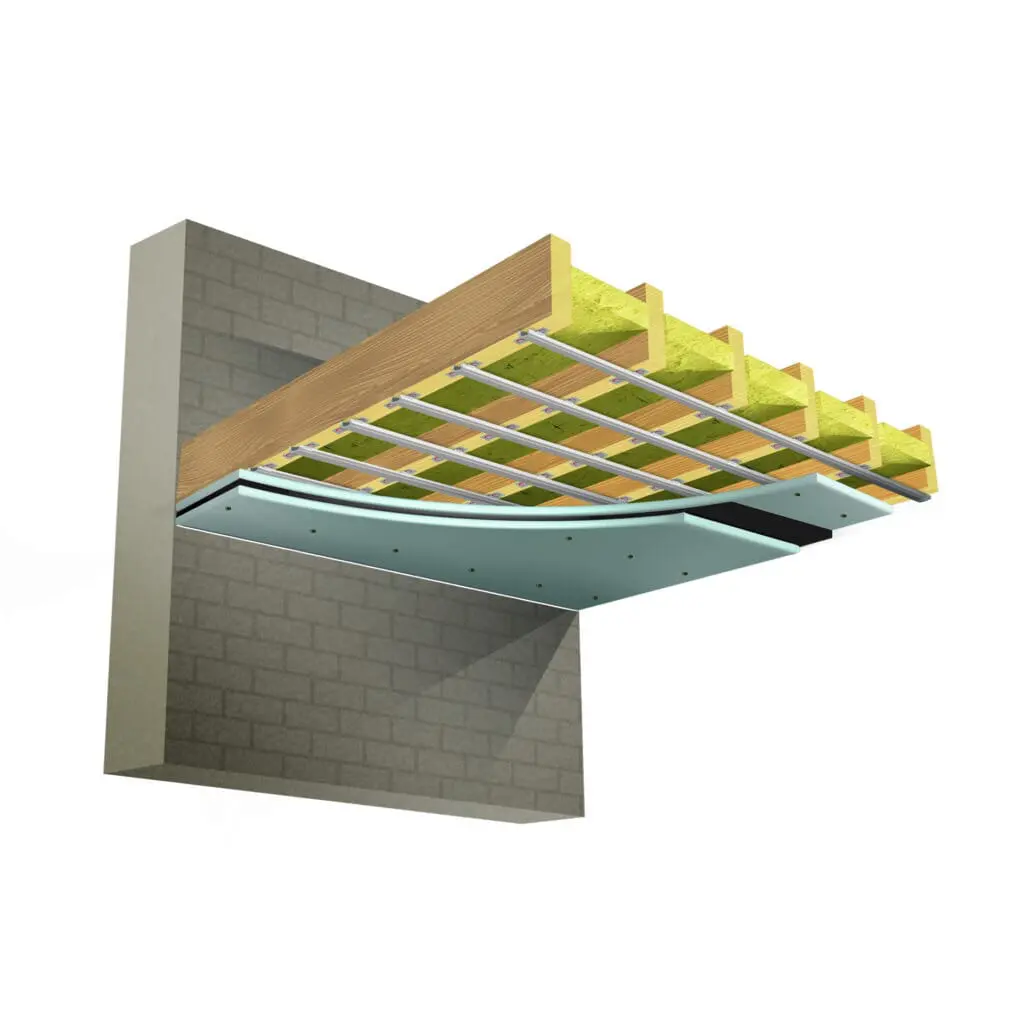
AcoustiClip Timber Joist Ceiling System
A high perfomance acoustic ceiling solution for timber joist ceilings. The system includes sound insulation slabs to add mass, the AcoustiClip sound isolation system to reduce vibrations, and soundproof panels to add more mass and density. These sound insulation products will stop airborne and impact transfer through the ceiling.
What are the best acoustic flooring solutions?
Soundproof flooring solutions reduce sound transfer through timber and concrete floors. Sound insulation between floor joists improves sound insulation, and soundproof underlays further improve the floor’s ability to block and absorb sounds.
Effectively, sound insulate your floor following these steps:
- Add density to the floor using products with high levels of mass (acoustic insulation and acoustic underlays).
- Sound absorbent materials on top of the floor, acoustic underlays, and floating floorboards will increase the floor’s ability to absorb impact sounds from transferring.
- Acoustic insulation inside floor joists prevents sound from resonating inside the cavity and from acting like a drum to amplify sound.
- Combining noise reduction products will ensure the highest levels of soundproofing.
What is the best acoustic matting for floors
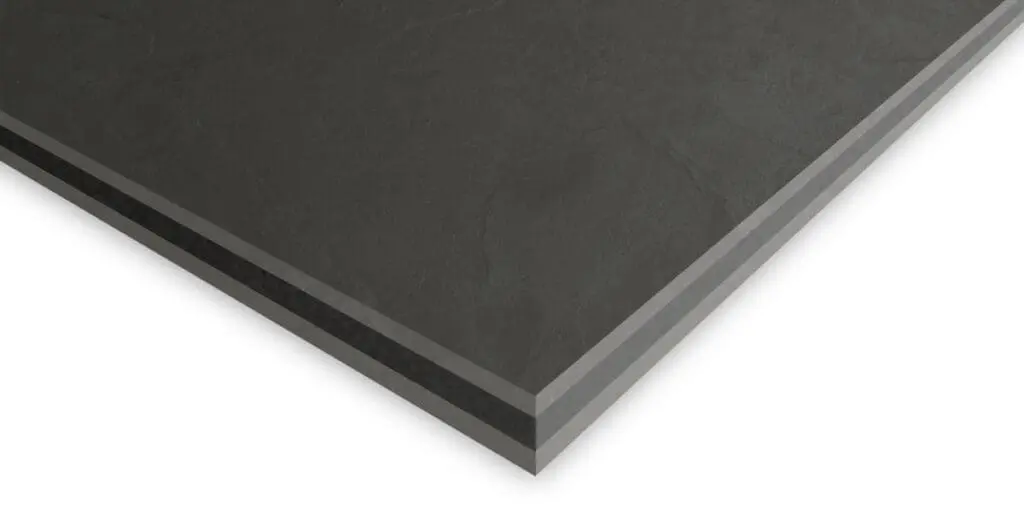
Noisestop F7 Plus acoustic underlay 15mm
Soundproof floors with our 15mm premium acoustic underlay and stop unwanted noise in a domestic setting. This premium soundproof mat offers excellent performance against airborne noise and impact sounds, reduces clear conversation and TV noise, and movement and footfall across the floor.
Soundproofing posts
Categories
47 articles
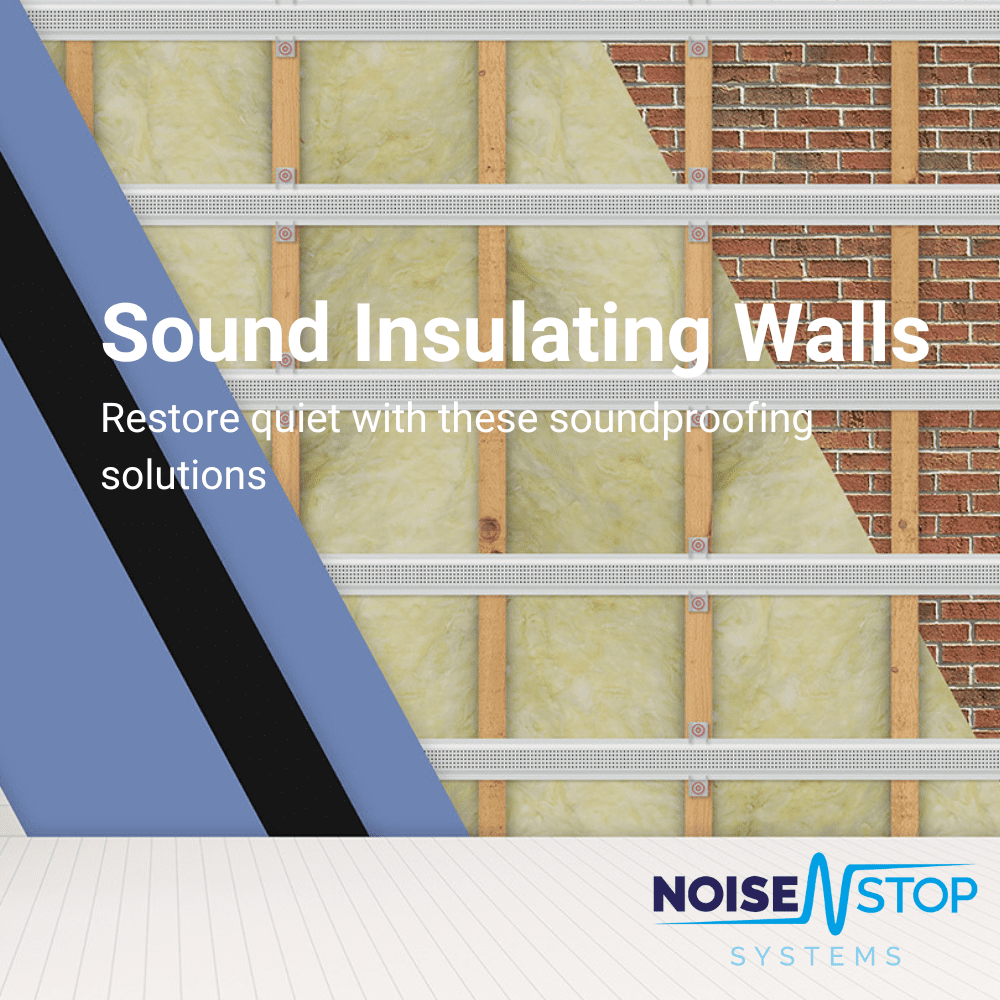
Best Way to Sound Insulate a Wall

Best Sound Insulation For Walls

How to Soundproof a Room for a Home Cinema
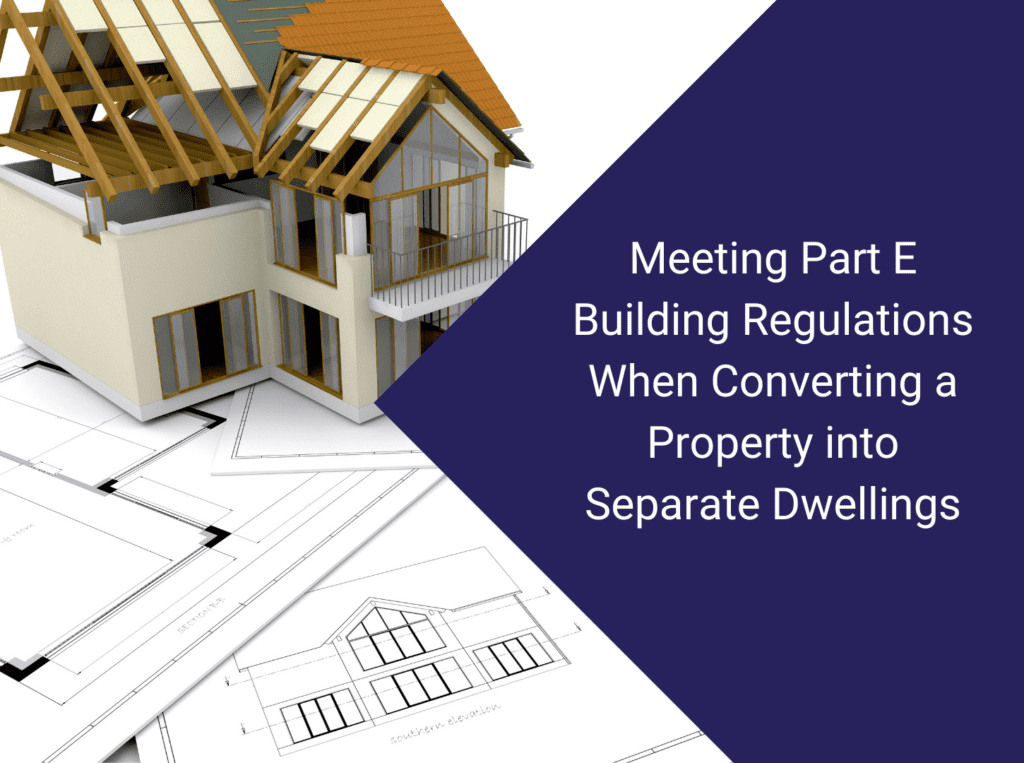
Meeting Part E Building Regulations When Converting a Property into Separate Dwellings
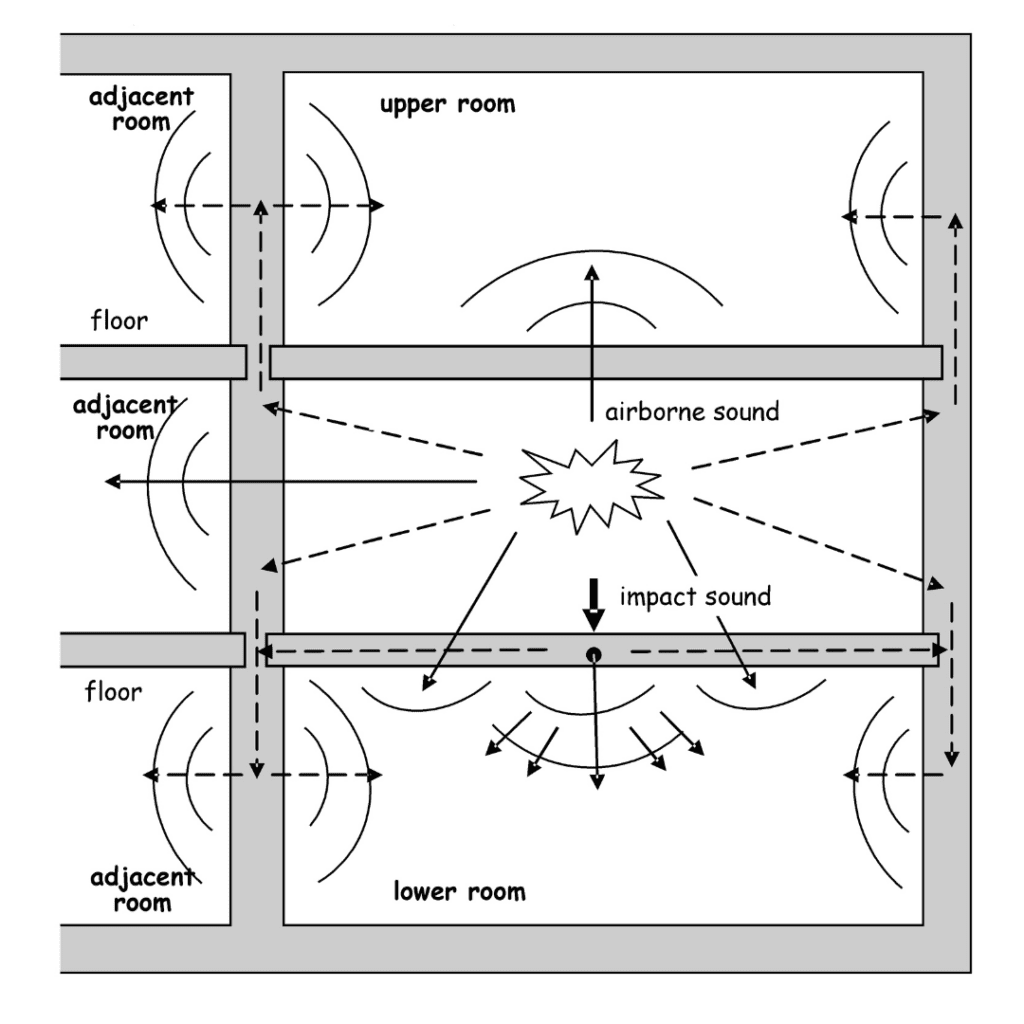
What is the difference between airborne and impact noise?
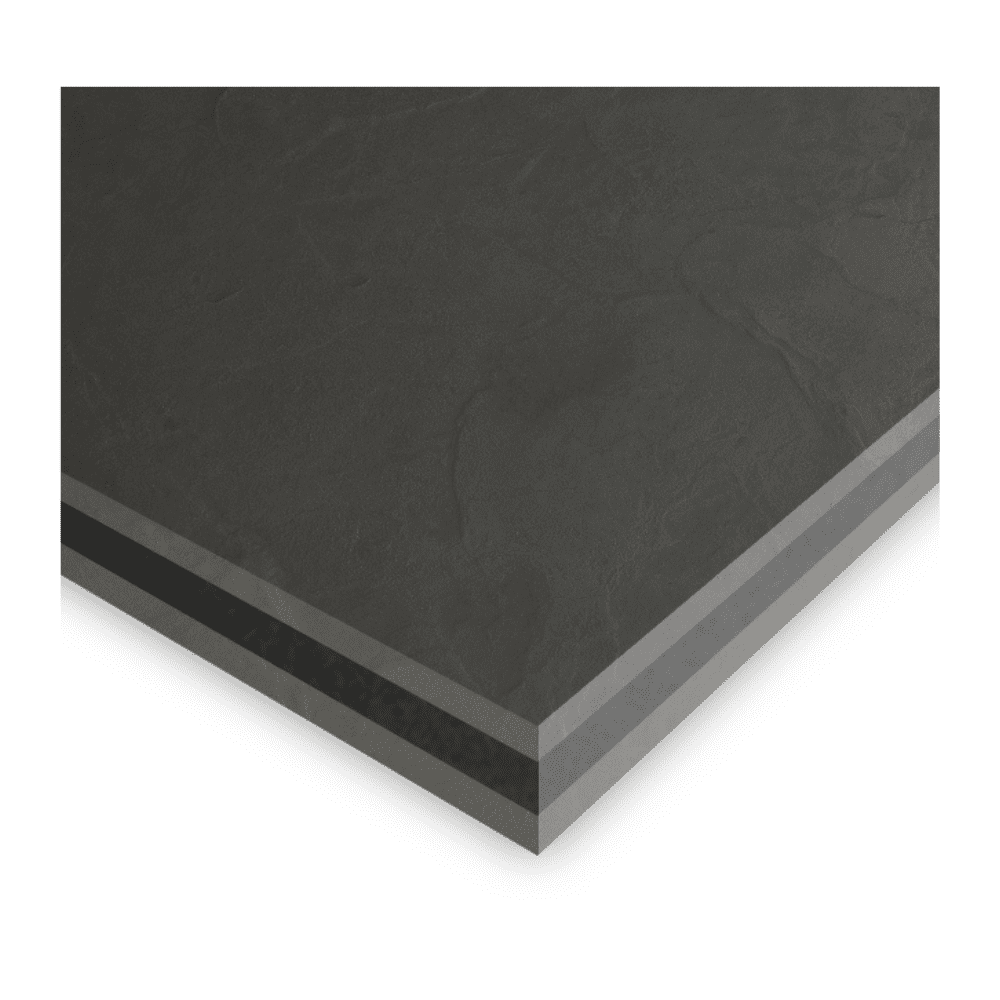
Best Soundproof Flooring Underlays
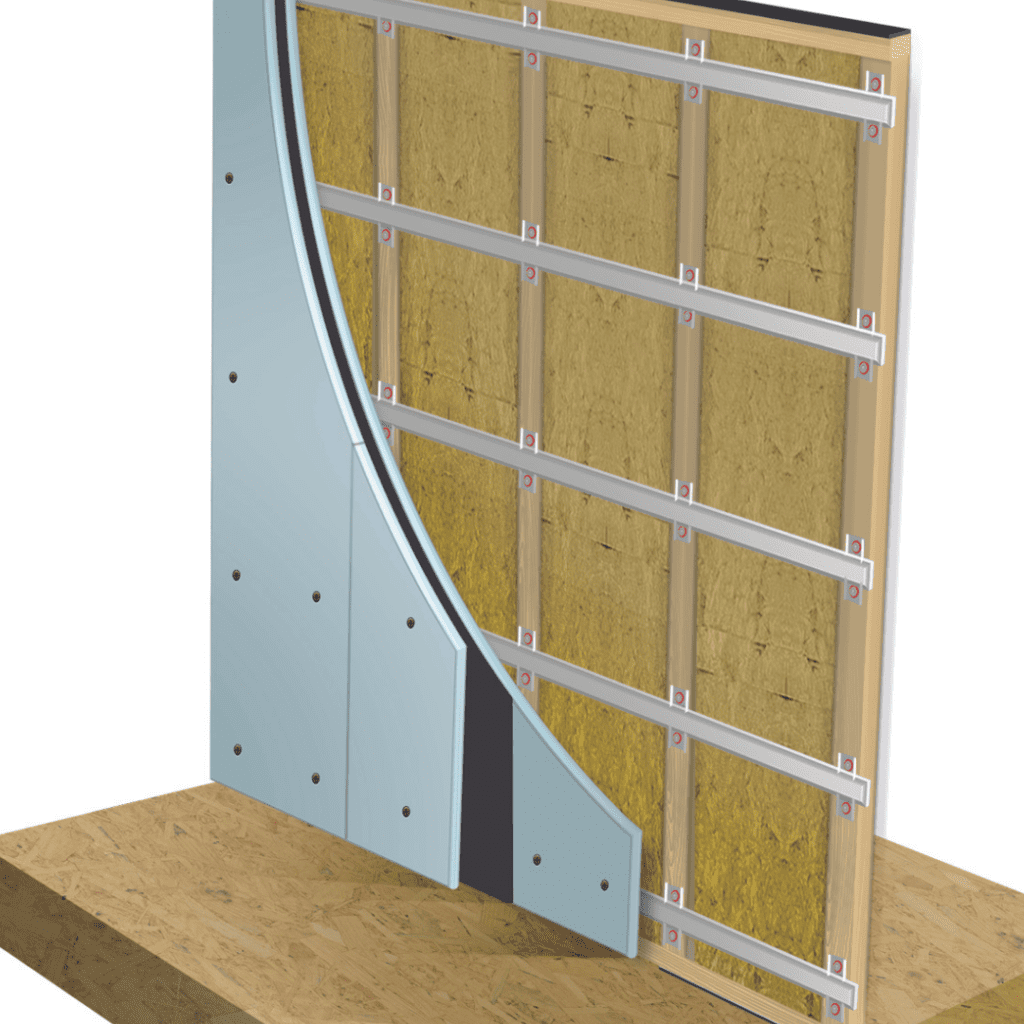
Wall Sound Insulation

Best Soundproofing Products 2025
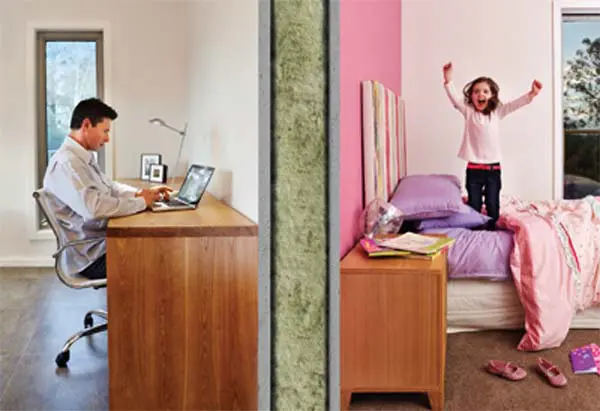
Party Wall Soundproofing Solutions Guide
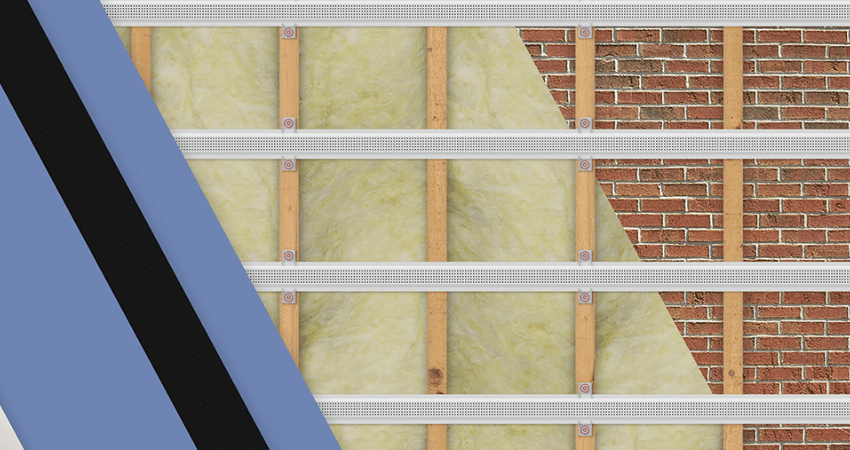
Soundproofing Materials for Walls
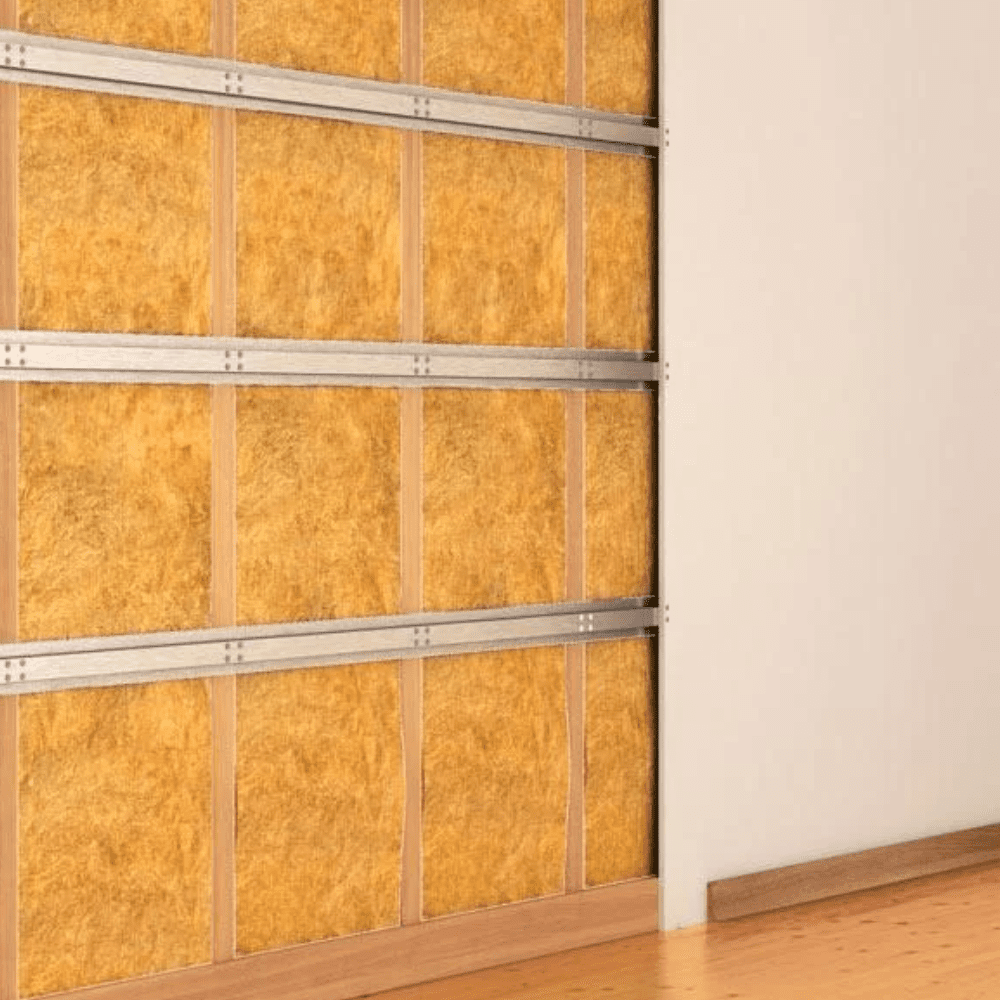
Understanding Sound Insulation
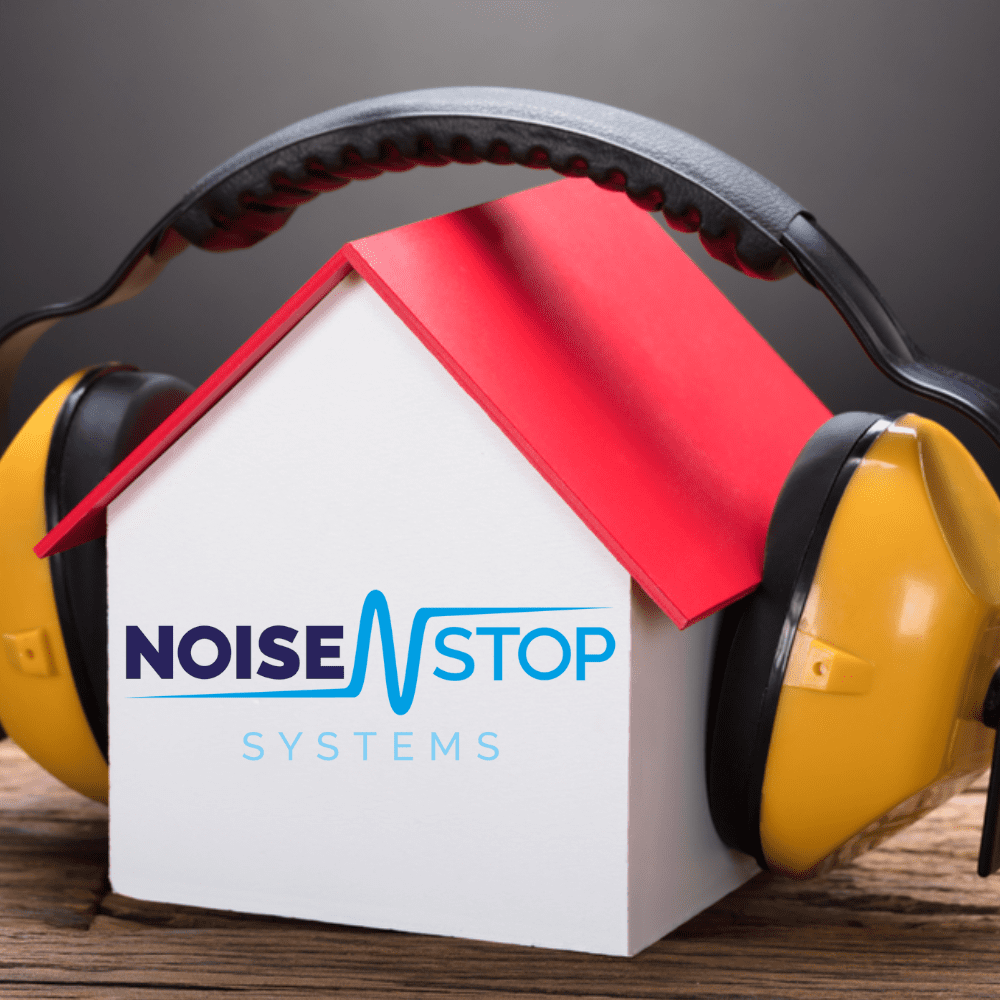
Guide To Soundproofing Your Home
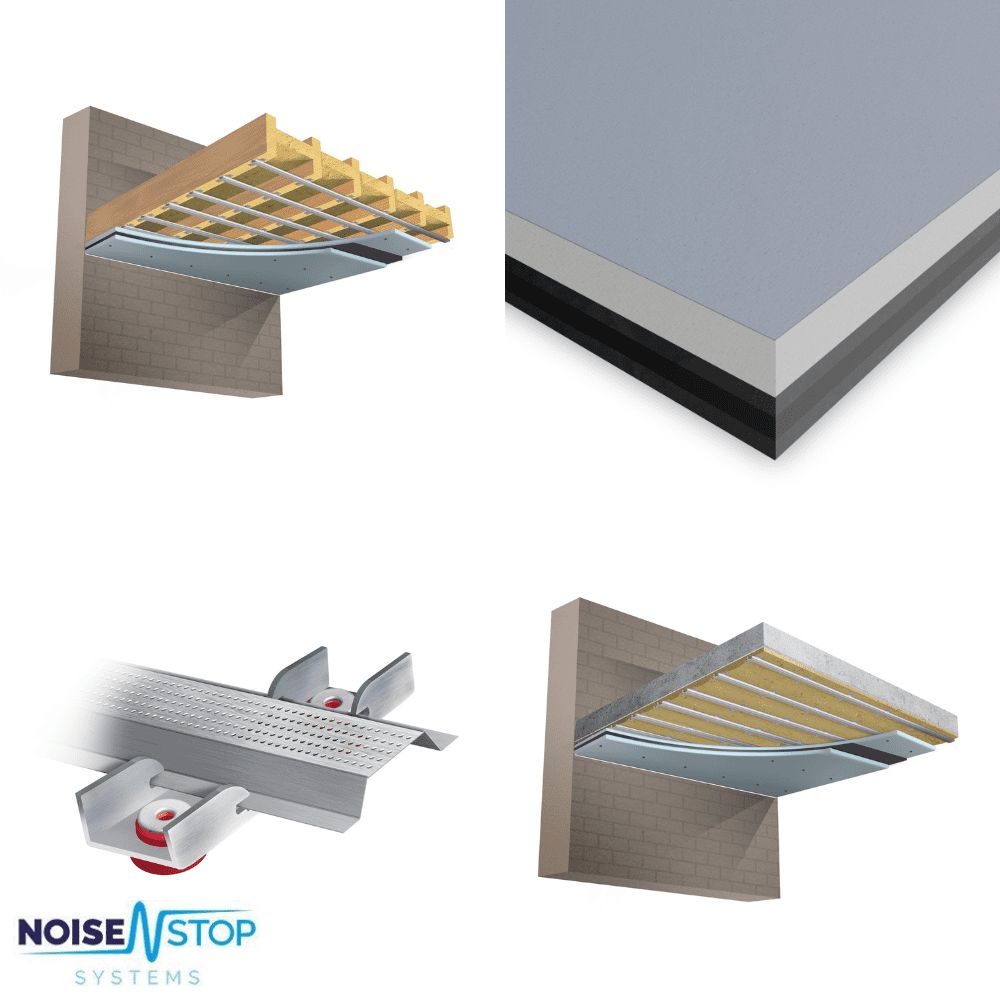
Soundproofing Materials for Ceilings
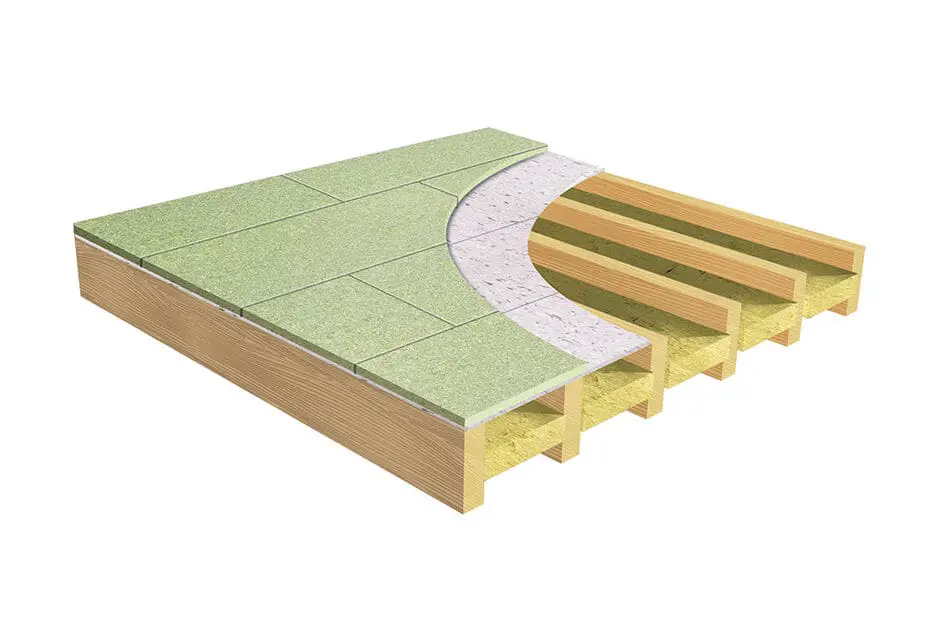
Part E Acoustic Solution for Timber Joist Separating Floors: Using Noisedeck 32, Insulation, and Soundbreaker Bars
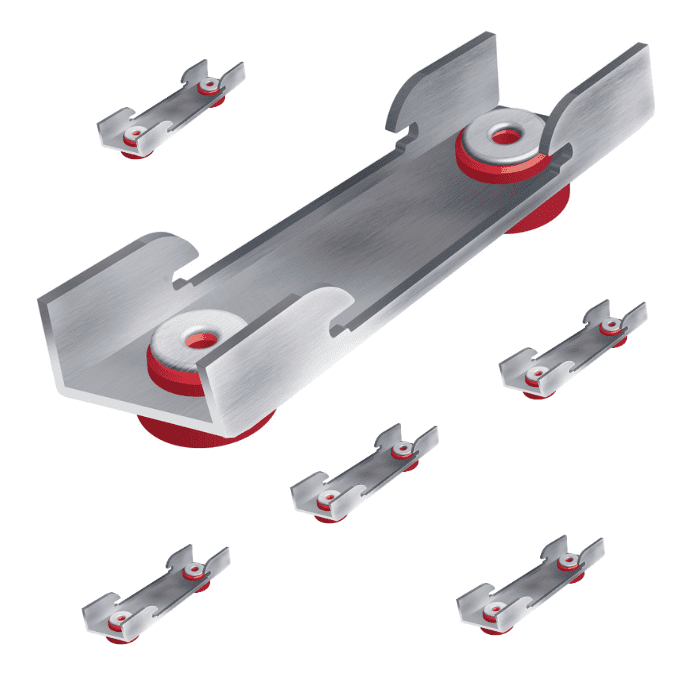
AcoustiClip Acoustic Wall Systems
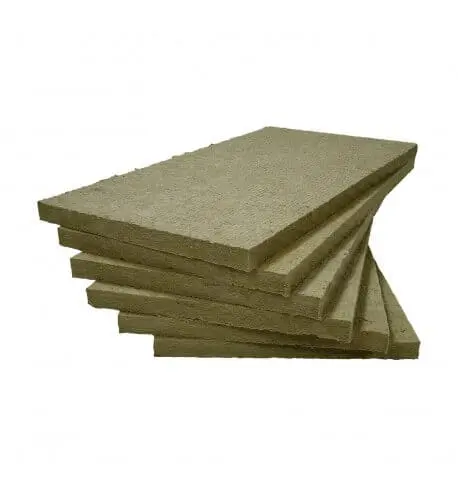
Acoustic Sound Insulation Guide
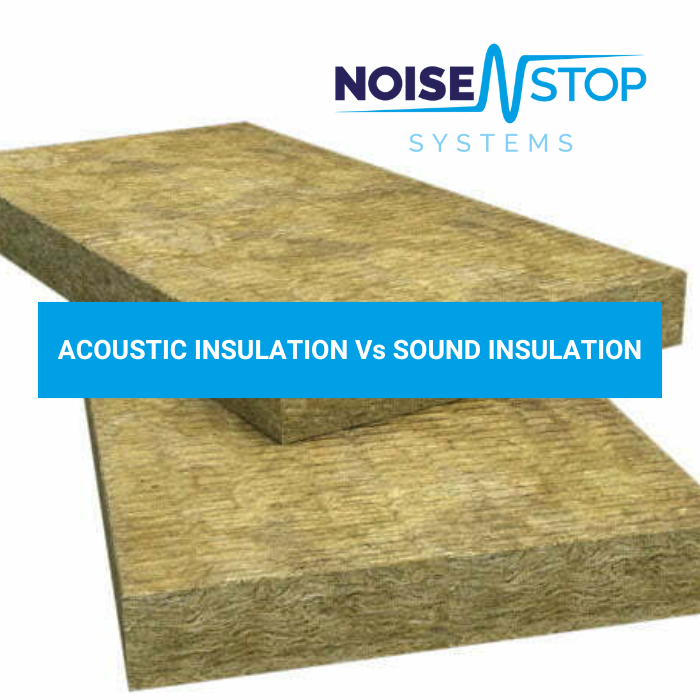
Soundproof Insulation vs. Acoustic Insulation: Understanding the Difference
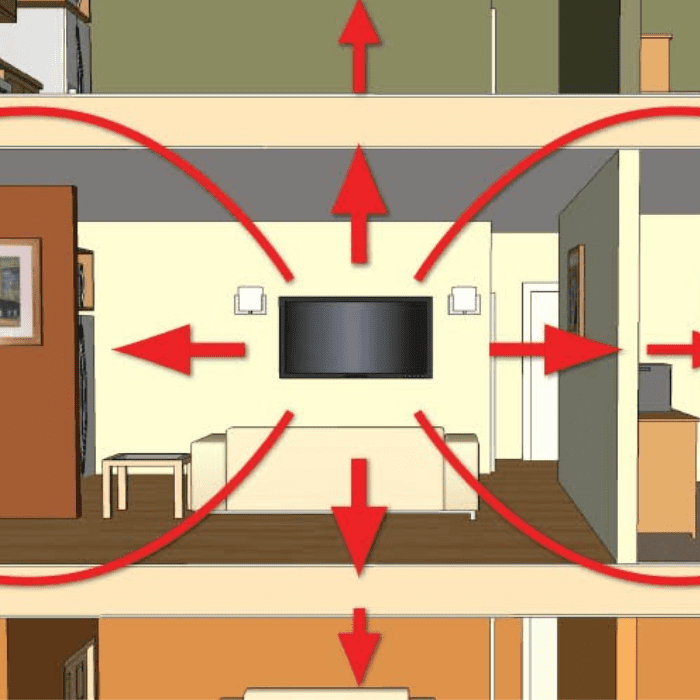
Flanking Noise
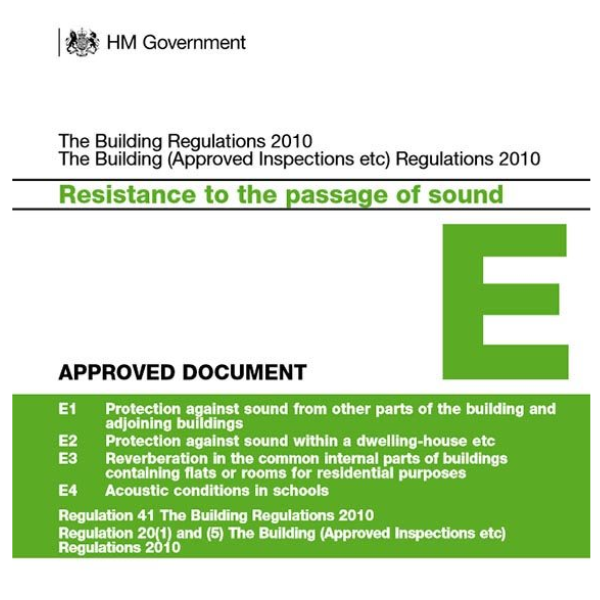
How To Pass Part E Building Regulations
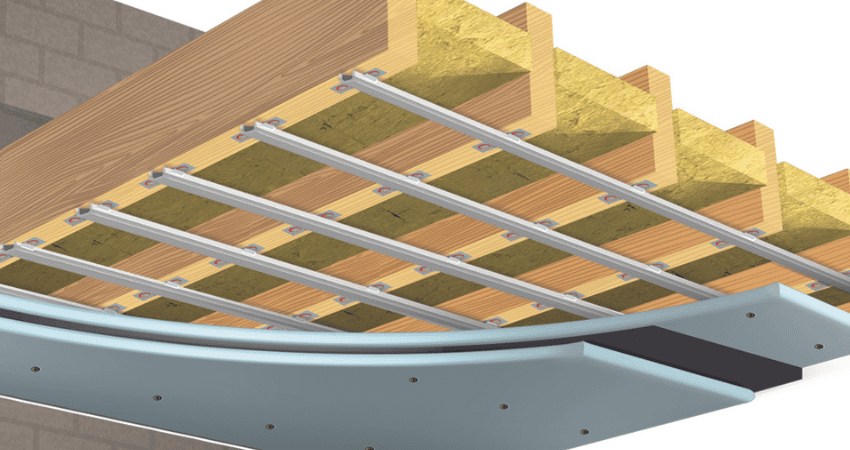
Acoustic Ceiling Soundproofing Systems

Soundproof a Wall Using Wall Soundproofing Systems
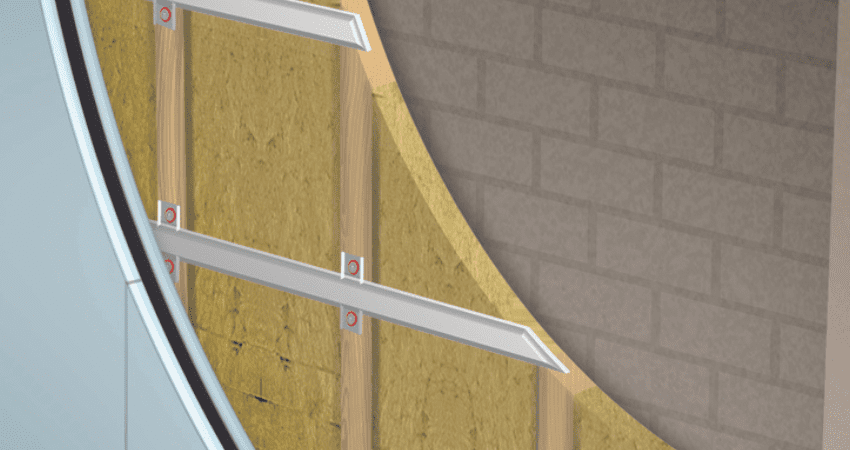
Soundproofing a Brick Party Wall Against Noisy Neighbours
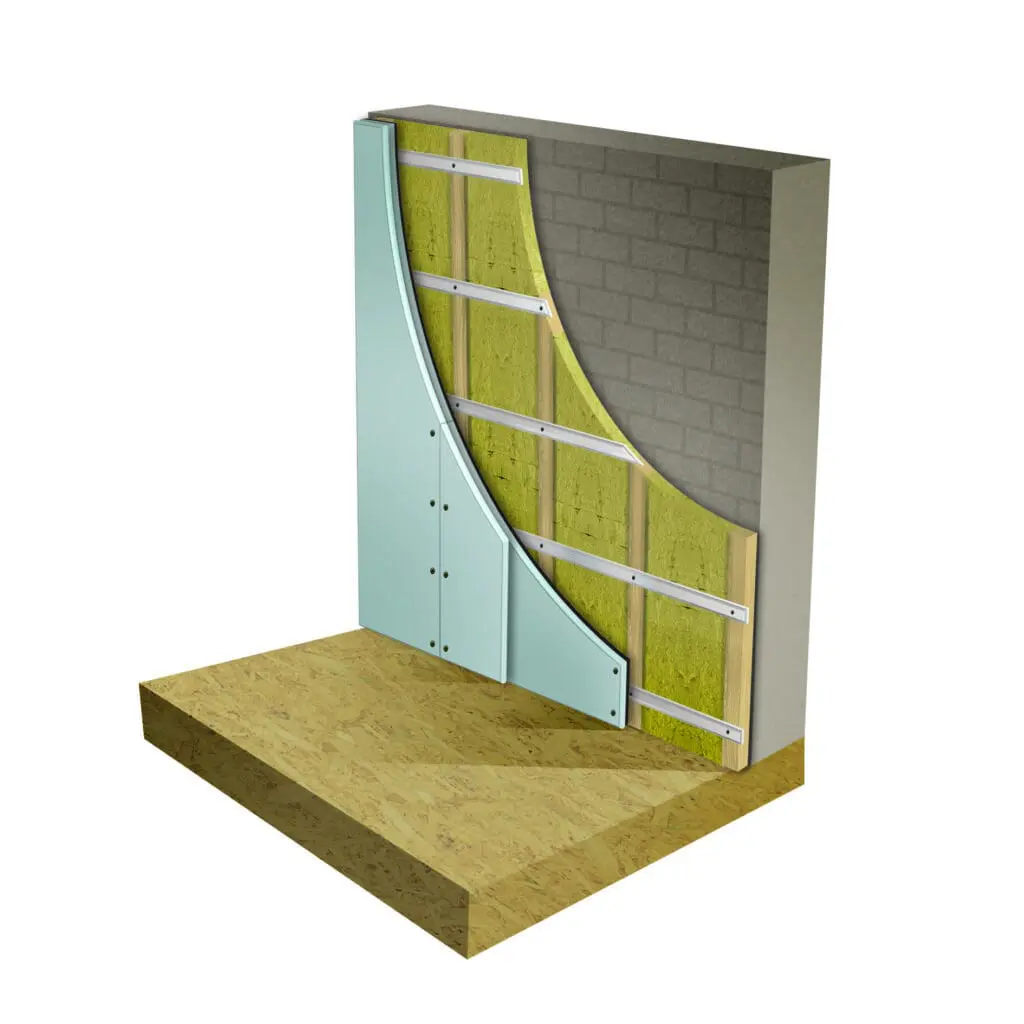
Guide To Soundproofing Walls




